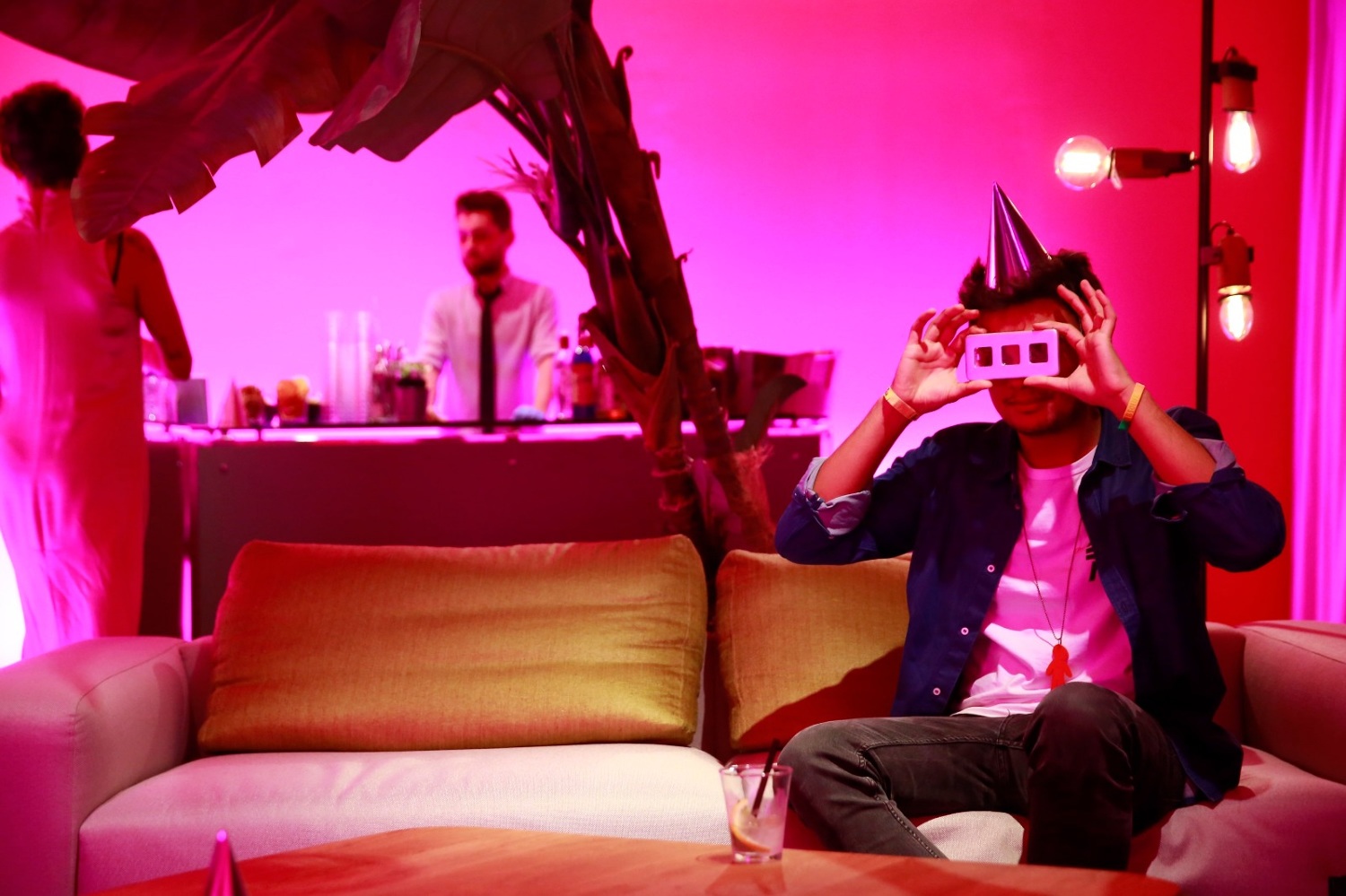Lauren McCarthy
Lauren McCarthy is an LA-based artist examining human identity and interactions amidst the backdrop of automation and algorithmic living.
Intro:
Lauren McCarthy is an LA-based artist examining social relationships in the midst of surveillance, automation, and algorithmic living. She is the creator of p5.js, an open source programming language with over 1.5 million users, for learning creative expression through code online. She is Co-Director of the Processing Foundation, a non-profit whose mission is to promote software literacy within the visual arts, and visual literacy within technology-related fields—and to make these fields accessible to diverse communities. She is an Assistant Professor at UCLA Design Media Arts. She holds an MFA from UCLA and a BS Computer Science and BS Art and Design from MIT.
Selected Artworks:
LAUREN
In a performance lasting several days, the artist attempts to become a human version of Amazon Alexa. The relationship that emerges falls in the ambiguous space between human-machine and human-human.
24h HOST
The 24h HOST performance is a small party that lasts for 24 hours, driven by software that automates the event, embodied in human HOST.
The Changing Room
This custom software installation and performance invites participants to select one of hundreds of emotions, then evoking that emotion in them and everyone in the space through a layered environment of light, visuals, sound, text, and interaction exhibited over the entire space.
Hello Someone
This installation invites you to act as a human version of Amazon Alexa and step into participant’s homes as their home automation assistant and respond to their needs.
McCarthy on her piece LAUREN:
“The process begins with an installation of a series of custom-networked devices that include cameras, microphones, switches, door locks, faucets, and other electronics. For three days, I remotely watch over the person 24/7 and control all aspects of their home. I attempt to be better than an AI, because I can understand them as a person and anticipate their needs.
Sometimes this means following them from room to room, turning on lights ahead of their steps. Other times their needs are more obscure, and I order special deliveries to their home or contact their friends through Facebook to arrange a visit or a text message.
They are usually expecting more technical tricks at first, a real sci-fi experience. But much like smart homes of today, I mostly do what they could do themselves — things like flipping switches, playing music, and looking up answers.
The LAUREN experience is ultimately about presence. Despite my lack of tricks, they are very aware that I am there, and aware of their own presence too. I’m trying to highlight this trade we are making for these surveillance smart devices. We give access to all our data and live camera feeds — for what? I hope that by being a real person on the end of that, I am offering something more than an Alexa AI at least…
We are meant to think smart home devices are about utility, but the space they invade is personal. The home is the place where we are first watched over, first socialized, first cared for. How does it feel to have this role assumed by artificial intelligence? Our home is the first site of cultural education; it’s where we learn to be a person. By allowing these devices in, we outsource the formation of our identity to a virtual assistant whose values are programmed by a small, homogenous group of developers.
They may not share the values or cultural reference points that we want to embed in your family’s home. Women, long seen as the keeper of the home domain, as complicated as that notion is, are now further subjugated. Their control is undermined by the smart home “assisting” and shaping each activity…
In LAUREN, I am wrestling for control with artificial intelligence. The participants are also negotiating boundaries and poking at the system. The point of this project is not to impose a point of view, but to give viewers a space to form their own. Immersed in the system in the comfort of their homes, people are able to engage with the tensions. Some moments are awkward and confusing, others are hopeful and intimate. Together, we have a conversation. Do we feel any limits when it comes to letting AI into our data, our decision making, and our most private spaces?”
You can read more in her Medium post about it.
McCarthy’s Awards & Residencies:
2019 Creative Capital Grantee
ZERO1 Arts Incubator Resident
Sundance Institute Fellow
Eyebeam Resident
Residency - CMU STUDIO for Creative Inquiry
Residency - Autodesk
Residency - NYU ITP
Residency - Ars Electronica / QUT TRANSMIT³. She is the recipient of grants from
Knight Foundation grant recipient
Online News Association grant recipient
Mozilla Foundation grant recipient
Google AMI grant recipient
Sundance Institute New Frontiers Labs grant recipient
Turner Broadcasting grant recipient
Rhizome grant recipient
McCarthy’s Selected Exhibitions and Installations:
Ars Electronica
Barbican Centre
Fotomuseum Winterthur
SIGGRAPH
Onassis Cultural Center
IDFA DocLab
Science Gallery Dublin
Seoul Mediacity Bienniale at the Seoul Museum of Art
Japan Media Arts Festival
London Eye
US Holocaust Memorial Museum
Lincoln Center for Performing Arts
McCarthy’s Selected Press:
2019 New York Art Galleries: What to See Right Now, New York Times
2019 Lauren: the performance art taking on Amazon’s Alexa, Financial Times
2019 Let me into your home: Artist Lauren McCarthy on becoming Alexa for a day, Guardian
2019 Between Body and Machine, A New Humanism Is Imagined, Hyperallergic
2017 Alexa, meet Lauren: L.A. artist turns her apartment into an experiment in artificial intelligence, LA Times
2017 Artist Lauren McCarthy Takes on Amazon’s Alexa Like John Henry Did the Steam Engine, Observer
Learn more about Lauren McCarthy:
McCarthy’s website: http://lauren-mccarthy.com/
McCarthy’s Twitter: https://twitter.com/laurenleemack?lang=en





